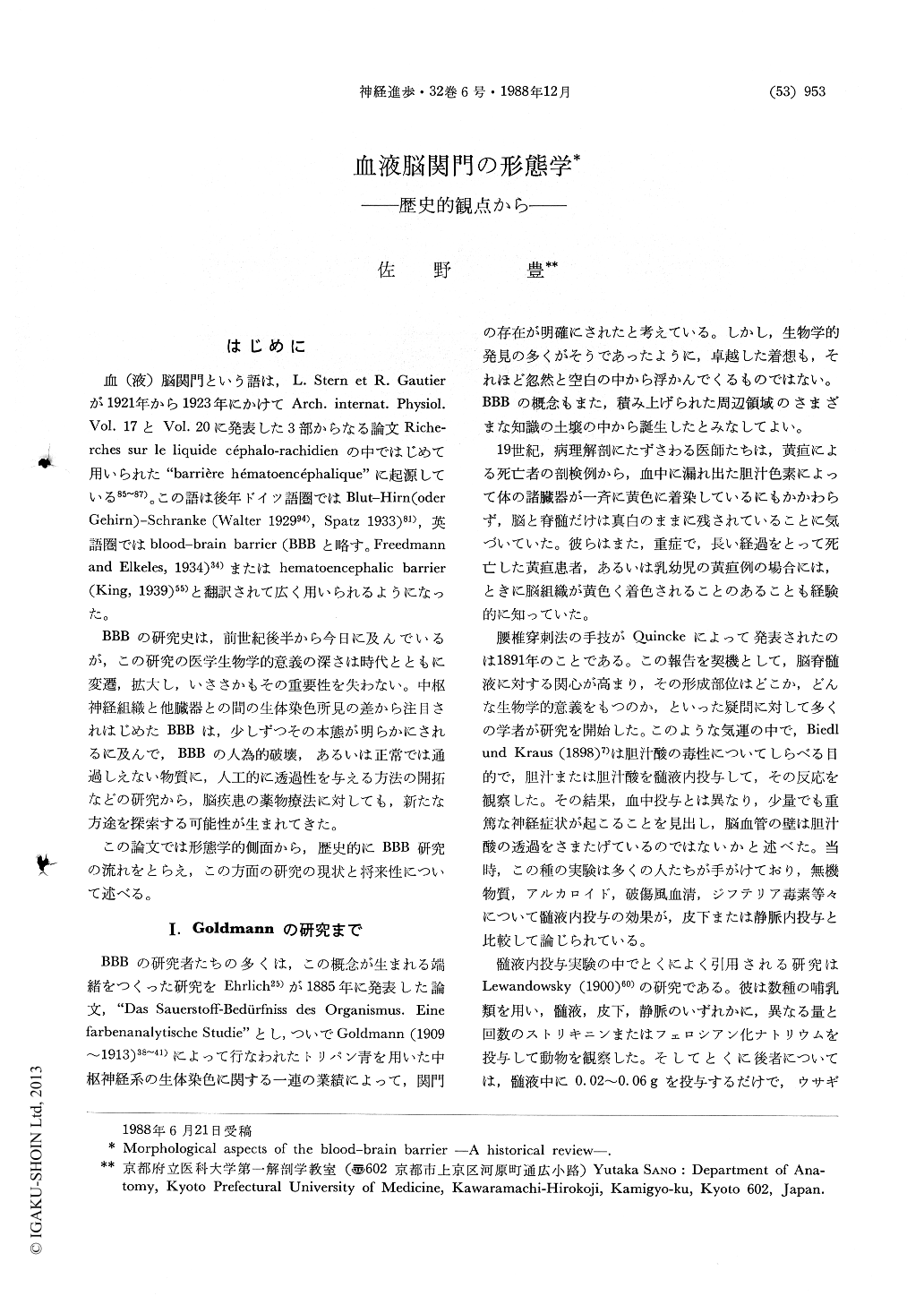Japanese
English
- 有料閲覧
- Abstract 文献概要
- 1ページ目 Look Inside
はじめに
血(液)脳関門という語は,L. Stern et R. Gautierが1921年から1923年にかけてArch. internat. Physiol. Vol.17とVol.20に発表した3部からなる論文Richerches sur le liquide cephalo-rachidienの中ではじめて用いられた"barriere hematoencephalique"に起源している85〜87)。この語は後年ドイツ語圏ではBlut-Hirn(oder Gehirn)-Schranke(Walter 192994),Spatz 1933)81),英語圏ではblood-brain barrier(BBBと略す。Freedmann and Elkeles,1934)34)またはhematoencephalic barrier(King,1939)55)と翻訳されて広く用いられるようになった。
BBBの研究史は,前世紀後半から今日に及んでいるが,この研究の医学生物学的意義の深さは時代とともに変遷,拡大し,いささかもその重要性を失わない。中枢神経組織と他臓器との間の生体染色所見の差から注目されはじめたBBBは,少しずつその本態が明らかにされるに及んで,BBBの人為的破壊,あるいは正常では通過しえない物質に,人工的に透過性を与える方法の開拓などの研究から,脳疾患の薬物療法に対しても,新たな方途を探索する可能性が生まれてきた。
The development of the morphological studies on the blood-brain barrier (BBB) was reviewed from a historical viewpoint and also their recent advance was reported.
The existence of a BBB was at the beginning of the present century suggested by the observations that either vital dyes or pharmacologically active compounds, when injected "paraneural" into the blood stream, fail to produce any morphological and functional changes in the CNS, while they show marked effects after "endoneural" treatment.

Copyright © 1988, Igaku-Shoin Ltd. All rights reserved.


